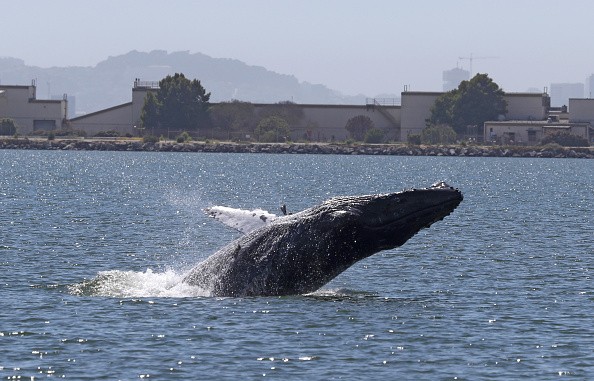Conservationists have pushed for improved protections for humpback whales along migration routes after a young whale was caught in fishing gear in the Antarctic.

Humpback Whale Entangled in Fishing Gear
Researchers aboard the Crystal Endeavour made the discovery in Trinity Island's Mikkelsen Harbour on the western side of the Antarctic peninsula on Wednesday.
Two Colombian Antarctic researchers, Logan Pallin and Dr. Natalia Botero-Acosta, approached the whale and took skin samples in order to identify its genetic origin, sex, cortisol levels as well as its meals.
Fishing gear and a number of buoys were entangled all over the whale's fluke (tail), where they were injuring and cutting its skin. Pallin discovered that the whale's dorsal fin had been cut off.
The whale's exact age isn't known, however it's thought to be around 18 months old. For its first migration, it was likely to have carried the gear thousands of miles down the South American coast. '
According to The Guardian, the animal was last spotted struggling to keep its head above water and may not survive.
Humpback whales, which were destroyed by whaling, are now on the recovery and moving towards locations with more human activity, as climate change affects the availability of food.
Also Read : Humpback Whales May Have Recovered from Close-Extinction, But Are They Safe From Danger?
What Type of Net Caught the Humpback?
Fisheries expert Simon Miller from the Australian Marine Conservation Society said it was difficult to determine what type of net had entangled the whale and whether it was operational or a "ghost net" that had been abandoned, damaged or cut loose.
"If they become wrapped up in a net like this juvenile, they are effectively dragging an anchor behind them which spells an untimely end unless they are freed," Miller said.
In order to remove the fishing gear without putting anyone in risk, it is necessary to use specialized equipment and highly skilled crews. In Antarctica, these items are almost always out of stock.
Professor Ari Friedlaender of the University of California Santa Cruz's ocean sciences department stated more must be done to prevent a repeat of this incident in the future, despite a report being disseminated to other vessels in the vicinity.

How Similar Incidents can be Prevented
Ari Friedlaender said that the more people are aware of this type of issue, the more can be done to prevent these interactions from occurring.
"Because nobody wants to see whales harmed like this, nobody wants to see people who fish have their livelihood dragged away as well." he added
For Friedlaender, fishing gear changes that lessen the likelihood of it getting hooked, tangled, and dragged, as well as additional data for fishermen to better time operations, can help reduce entanglements.
Fisheries have wide reach impacts on vulnerable species, according to Miller. Using high-risk fishing gear like lobster pots with long head ropes or gillnets in the locations where humpback whales are known to move and cluster can help prevent whale entanglement, according to Miller.
Because humpback migration patterns and timings are predictable, fishers should know where and when not to put and throw their nets.
For more news, updates about humpback whales and similar topics don't forget to follow Nature World News!
© 2026 NatureWorldNews.com All rights reserved. Do not reproduce without permission.





